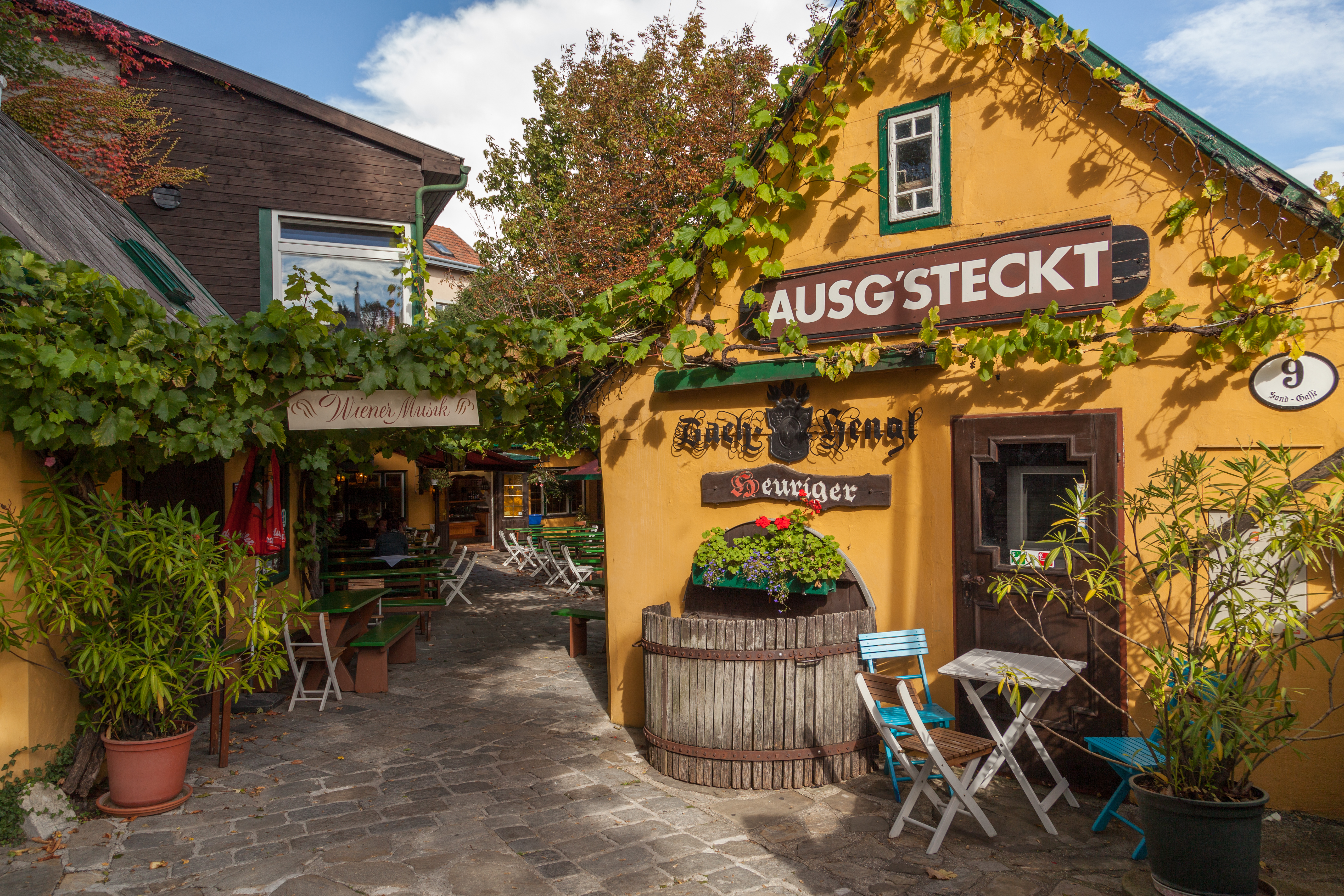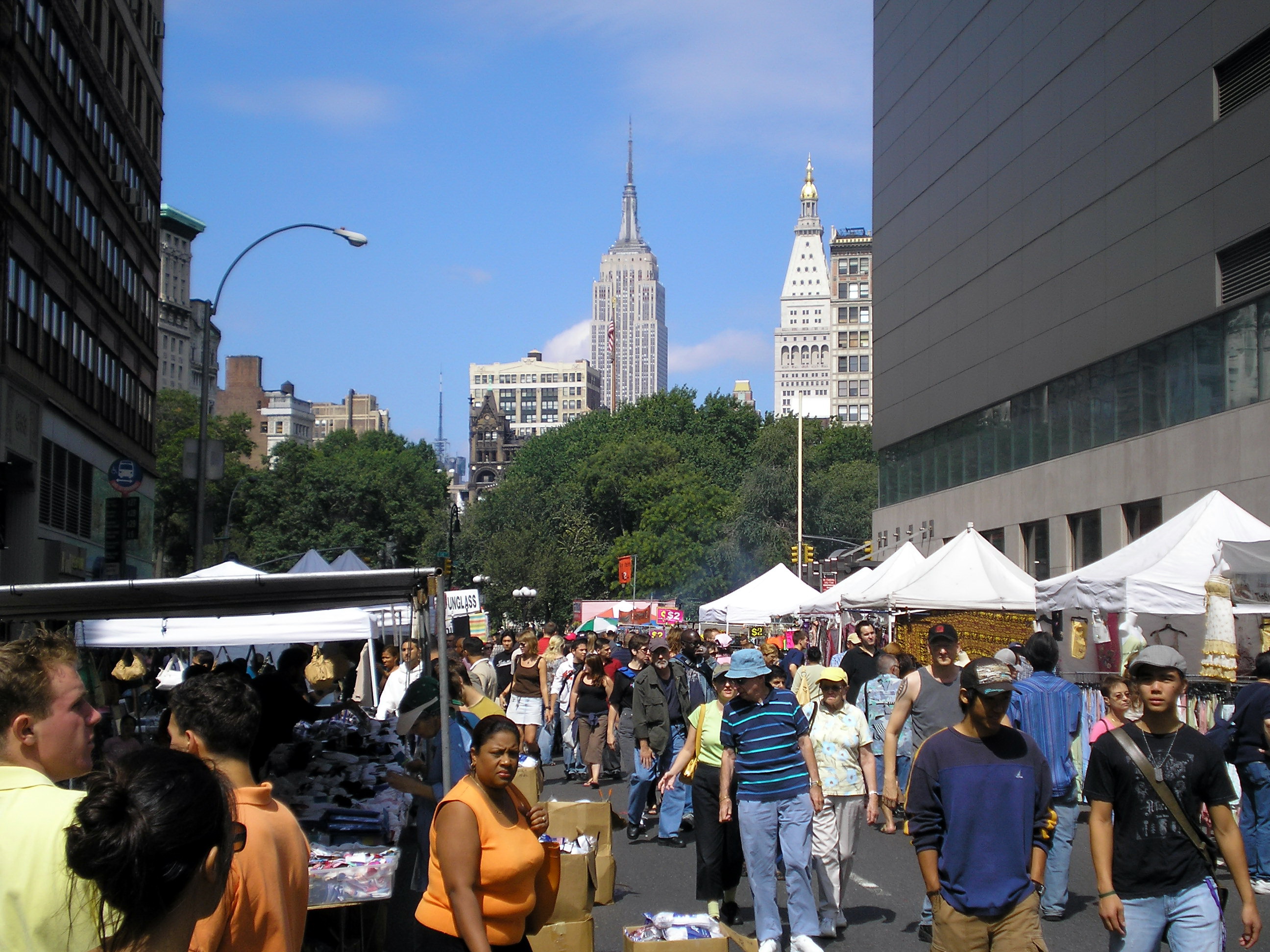|
Heuriger
In eastern Austria, a ''Heuriger'' (; Austrian dialect pronunciation: Heiriga, Hungarian language, Hungarian: Kurta kocsma) is a tavern where local winemakers serve their new wine under a special licence in alternating months during the growing season. Each state in Austria has slightly varying rules on how many Heuriger of a town can be open at any given time and for how long in total during the year. The ''Heurige'' are renowned for their atmosphere of ''Gemütlichkeit'' shared among a throng enjoying young wine, simple food, and – in some places – ''Schrammelmusik''. They correspond to the ''Straußwirtschaften'' in the German Rheinland, the ''Frasche'' in Friuli-Venezia Giulia, and ''Osmica'' in Slovenia. ''Heuriger'' is the abbreviation of "heuriger Wein" (this year's wine) in German language, Austrian and Bavarian German. Originally, they were simple open-air taverns on the premises of winemakers, where people would bring along food and drink the new wine. Nowad ... [...More Info...] [...Related Items...] OR: [Wikipedia] [Google] [Baidu] |
Wien Heurigen-Lokal 2014 1
Vienna ( ; ; ) is the capital city, capital, List of largest cities in Austria, most populous city, and one of Federal states of Austria, nine federal states of Austria. It is Austria's primate city, with just over two million inhabitants. Its larger metropolitan area has a population of nearly 2.9 million, representing nearly one-third of the country's population. Vienna is the Culture of Austria, cultural, Economy of Austria, economic, and Politics of Austria, political center of the country, the List of cities in the European Union by population within city limits, fifth-largest city by population in the European Union, and the most-populous of the List of cities and towns on the river Danube, cities on the river Danube. The city lies on the eastern edge of the Vienna Woods (''Wienerwald''), the northeasternmost foothills of the Alps, that separate Vienna from the more western parts of Austria, at the transition to the Pannonian Basin. It sits on the Danube, and is ... [...More Info...] [...Related Items...] OR: [Wikipedia] [Google] [Baidu] |
Straußwirtschaft
A ''Strausse'' or ''Strausswirtschaft'' (also ''Strauße'' or ''Straußwirtschaft'') is a type of wine tavern in winegrowing areas of German language, German-speaking countries that is only open during certain times of the year. Typically it is a pub run by winegrowers and winemakers themselves, in which they sell their own wine directly to the public. The food served needs to be simple, regional cold dishes. Other expressions like ''Besenwirtschaft'' and ''Besenschänke'' ("broom pub"), ''Rädlewirtschaft'' ("cyclists' pub") as well as ''Hecken-'' or ''Häckerwirtschaft'' are also common. Characterization A ''Strausswirtschaft'' is essentially understood to be a winemaker serving his own wine on his own premises. These seasonal inns are not subject to normal business laws and are thus not obliged to have a licence or to pay extra taxes. They must, however, fulfil certain conditions instead. These conditions vary from States of Germany, state to state but they are in general agre ... [...More Info...] [...Related Items...] OR: [Wikipedia] [Google] [Baidu] |
Mauer, Vienna
Mauer (German for ''"wall"''; Central Bavarian: ''Maua'') is a former village of Lower Austria that has been part of Vienna since 1938. Today's cadastral community belongs to the 23rd District of Vienna, called Liesing. In the west, Mauer borders the Vienna Woods. History A jasper mine was located in Mauer during the Neolithic. The first official mention of the village dates back to 1210. Wine production began during the Middle Ages, and still continues today. The Society of Jesus controlled the village from 1609 to 1773. In Biedermeier times Mauer was a famous Viennese summer retreat location. The first mayor took office in 1850, and the village was promoted to market town in 1902. After Nazi Germany annexed Austria, the City of Vienna was expanded greatly, which led to the incorporation of Mauer in 1938. The Rosenhügel Film Studios, which were built from 1919 to 1923 in the north of Mauer, were considered at their opening as the most modern and largest film studios in Au ... [...More Info...] [...Related Items...] OR: [Wikipedia] [Google] [Baidu] |
Pfaffstätten
Pfaffstätten is a town in the district of Baden in Lower Austria in Austria. Population Sights At the heart of the town is the Lilienfelderhof, a monastic grange owned by Lilienfeld Abbey, which is leased to the Kartause Gaming Private Foundation for 99 years, until 2105. Traditionally dated to 1209, this estate has played a central role in the history of Pfaffstätten and in the lives of its residents. Many inhabitants attended kindergarten there, found short- or long-term employment, or were married in the estate's church. Pfaffstätten is also well known for its many Heuriger and the annual street fair A street fair celebrates the character of a neighborhood. As its name suggests, it is typically held on the main street of a neighborhood. The principal component of street fairs are booths used to sell goods (particularly food) or convey informa ..., the ''Großheuriger Pfaffstätten'', the biggest of its type in Austria, in which the local Heuriger of the town come toget ... [...More Info...] [...Related Items...] OR: [Wikipedia] [Google] [Baidu] |
Grinzing
Grinzing () was an independent municipality until 1892 and is today a part of Döbling, the 19th district of Vienna. Wien.gv.at webpage (see below: References). Geography Location Grinzing lies in the northwest of Vienna and, with an area of 613.52 hectares, is the largest suburb in the district of Döbling. To the northeast, it borders on Josefsdorf; the border continues along the Wildgrube and the Schreiberbach stream towards the east, where it branches along the Springsiedelgasse and the Neugebauerweg to the south. The border then runs along the Hungerbergstraße to mark the boundary to Unterdöbling, before following the course of the Kaasgraben, which divides Grinzing from Sievering in the east. Finally, the border turns northwestward and continues via the Himmelstraße and the Spießweg to the edge of the city of Vienna, which separates Grinzing from Weidling. Topography Grinzing is characterised by numerous forested ridges of the Wienerwald (Vienna Woods) ... [...More Info...] [...Related Items...] OR: [Wikipedia] [Google] [Baidu] |
Street Festival
A street fair celebrates the character of a neighborhood. As its name suggests, it is typically held on the main street of a neighborhood. The principal component of street fairs are booths used to sell goods (particularly food) or convey information. Some include carnival rides and parades. Many have live music and dance demonstrations. Fairs typically range no more than a few blocks long, although some fairs, such as the 9th Avenue International Food Festival in New York City and the Solano Stroll in Northern California, extend more than a mile. A fair only one block long is commonly called a block party. Variety Street fairs vary greatly in character, even within one city. Annual street fairs in Seattle, Washington, for example, include the University District Street Fair that feature the work of craftspeople and require that the person who make the goods that are for sale must be present in their own booths. The Fremont Fair features crafts from around the world, as well ... [...More Info...] [...Related Items...] OR: [Wikipedia] [Google] [Baidu] |
Tribuswinkel
Tribuswinkel is a town and cadastral community in the district of Baden (district of Austria), Baden in Lower Austria in northeast Austria. Since 1972, it is part of the Municipality (Austria), Municipality of Traiskirchen. History The oldest historical mention of Tribuswinkel is from the 12th century with a mention of "Jubort de Tribanswinchele" in 1136 in the founding charter of the Heiligenkreuz Abbey. In 1251, a watermill, running along the Badener Mühlbach (mill river) is mentioned and from the middle ages up until the 19th century, there were at least 4 mills in Tribuswinkel. 1359, Wolfgang von Winden bought the town of Tribuswinkel. The family ''von Winden'' owned Tribuswinkel until 1516. In 1365, Wolfgang von Winden commissioned the construction of a small church and the parish of Tribuswinkel was founded in 1368. Following the death of the Family ''von Winden'', in 1590, the Vienna, viennese businessman Georg Federl bought Tribuswinkel. Since the 16th century, a she ... [...More Info...] [...Related Items...] OR: [Wikipedia] [Google] [Baidu] |
Gumpoldskirchen
Gumpoldskirchen ( Central Bavarian: ''Gumpoidskiachn'') is a town in the district of Mödling in the Austrian state of Lower Austria. Gumpoldskirchen borders on the municipalities Mödling, Guntramsdorf, Gaaden, Pfaffstätten and Traiskirchen. The municipal area extends from the flats in the Vienna Basin to forest areas of the Anninger in the Vienna Woods. Gumpoldskirchen is very famous for its wine, especially its Spätrot-Rotgipfler blend, and "Heurigers" as it attracts many tourists from Vienna to its hillside vineyards. Gumpoldskirchen derives its name from Gumpold of Passau. Climate Gumpoldskirchen has a mild, continental climate attributed to its proximity to the spa line in Austria. The nearby Vienna Woods directly to the west affect the climate as well. There are 250 weather stations for the Central Institute for Meteorology and Geodynamics that call Gumpoldskirchen home. History The Stone Age people settled the area about 6500 years ago. The Romans then settled in t ... [...More Info...] [...Related Items...] OR: [Wikipedia] [Google] [Baidu] |
Neustift Am Walde
Until 1892, Neustift am Walde ( Central Bavarian: ''Neistift aum Woid'') was an independent municipality on the outskirts of Vienna, Austria. Today it is part of Döbling, the 19th district of Vienna. It is also one of the 89 Katastralgemeinden. Geography Neustift covers an area of 209.85 hectares, of which over one fourth (58 hectares) - largely made up of the Dorotheer Wald (forest) and the Neustifter Friedhof (cemetery) - lie in the district of Währing, while the section of Neustift in Döbling (151.85 hectares) includes ''inter alia'' the centre of the original settlement. Neustift lies to the northwest of Pötzleinsdorf, to the west of Sievering, to the east of Neuwaldegg and to the southeast of Salmannsdorf. The village comprises two long rows of houses, separated from one another by a narrow road that follows the upper section of the Krottenbach stream. A road connects Neustift am Walde with Salmannsdorf and the Krim, a part of Unterdöbling. History The ... [...More Info...] [...Related Items...] OR: [Wikipedia] [Google] [Baidu] |
Königstetten
Königstetten is a municipality in the district of Tulln in the Austrian state of Lower Austria Lower Austria ( , , abbreviated LA or NÖ) is one of the nine states of Austria, located in the northeastern corner of the country. Major cities are Amstetten, Lower Austria, Amstetten, Krems an der Donau, Wiener Neustadt and Sankt Pölten, which .... Population References External links Cities and towns in Tulln District Cadastral community of Tulln District {{LowerAustria-geo-stub ... [...More Info...] [...Related Items...] OR: [Wikipedia] [Google] [Baidu] |
Langenlois
Langenlois () is a town at the Kamp river in the Kamptal, district of Krems-Land in the Austrian state of Lower Austria. Famous for its wine production, it is also home to the Loisium, a centre celebrating and advertising the local wine and built by the American deconstructionist architect Steven Holl Steven Holl (born December 9, 1947) is a New York–based American architect and watercolorist. His work includes the 2022 Rubenstein Commons at the Institute for Advanced Study; the 2020 Campus expansion of the Museum of Fine Arts Houston inc .... Population References Cities and towns in Krems-Land District {{LowerAustria-geo-stub ... [...More Info...] [...Related Items...] OR: [Wikipedia] [Google] [Baidu] |





